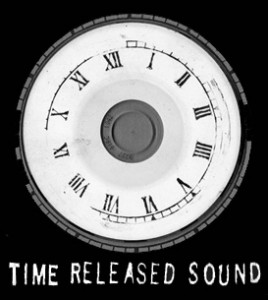 Label profile? Pfft! Time Released Sound is nothing so humdrum as a label, more of an artisan’s workshop, producing lovingly crafted over-the-top artefacts housing ultra-limited homemade discs—releases ranging from precious to playful, sometimes both in one. What SF-based one-man-band artist/artisan Colin Herrick does in effect is to create bespoke audio-visual art works. The self-consciously elaborate packaging would seem a somewhat indulgent display without musical substance inside, and substance there undoubtedly is, as is underlined by the fact that each is made available in a less extravagant edition once the highly limited deluxe editions sell out (blink and you’ve missed them!). Igloomag’s remit requires vision to bow to sound, hence minute detailing of the delights of packaging and sundry accessories is foregone here in favour of focus on the music—with works from 5turns25, Fescal, Joe Frawley, Wil Bolton, Ashlar, and Strië (though note several parenthetical links below to individual artwork slideshows).
Label profile? Pfft! Time Released Sound is nothing so humdrum as a label, more of an artisan’s workshop, producing lovingly crafted over-the-top artefacts housing ultra-limited homemade discs—releases ranging from precious to playful, sometimes both in one. What SF-based one-man-band artist/artisan Colin Herrick does in effect is to create bespoke audio-visual art works. The self-consciously elaborate packaging would seem a somewhat indulgent display without musical substance inside, and substance there undoubtedly is, as is underlined by the fact that each is made available in a less extravagant edition once the highly limited deluxe editions sell out (blink and you’ve missed them!). Igloomag’s remit requires vision to bow to sound, hence minute detailing of the delights of packaging and sundry accessories is foregone here in favour of focus on the music—with works from 5turns25, Fescal, Joe Frawley, Wil Bolton, Ashlar, and Strië (though note several parenthetical links below to individual artwork slideshows).
:: :: ::
[soundcloud url=”http://api.soundcloud.com/tracks/28079674″ width=”100%” height=”166″ params=”auto_play=false&show_artwork=true&color=000000″ iframe=”true” /]
[Release info] First in the frame is 5turns25, a Connecticut duo whose Evolution of the Human Heart purveys a knowingly “American” sounding ambient folktronica hybrid that invites musing on the genre tag ‘Americana.’ A previous reviewer deconstructs it in terms of associations with ‘pioneer explorers, plucked guitar and campfires, cheap oil and constant movement…this restlessness, the state of perpetual transit…’ (Nathan Thomas). The album does indeed have one reaching knee-jerk for the term initially, with its scrub of washed-out guitar pluckery and downhome clangour tapping into a mythology of free-riding folk and home-on-the-range roots. It has about it a certain Appalachian-inflected drift, occasional swells to cinematic-thematic balanced by copious helpings of backwaters busk. For all the talk of Americana, it’s a sound redolent of two no longer active purveyors of un-American activities: album standout, “Beneath the Noise” shares large resonances with UK folk-drone space-hymnalists, Rameses III. And closing title track recalls the post-everything pastichery of Finland’s The Gentleman Losers, albeit more authentically voiced. Elsewhere John Kasiewicz and Dan Tressler’s purposely half-formed bucolic vignettes gently fizz with found sounds and rattling realia, carriers of strange reflective cargo. Evolution of the Human Heart was recorded in an old barn whose creaks and rustles form an occlusive expressive veil, a kind of backwoods ambiance which, with muted FX’n’electronics assists, helps turn the simple melodic twirls and chordal swirls of the twosome’s barely adorned instruments into evocative fuzzy blurscapes. [Artwork slideshow (scroll to view)]
:: :: ::
[soundcloud url=”http://api.soundcloud.com/tracks/36319889″ width=”100%” height=”166″ params=”auto_play=false&show_artwork=true&color=000000″ iframe=”true” /]
[Release info] Fescal is a sonician who seems to prefer to stay low, the shadowy air surrounding him extending to the sound object, Alchemical Wanderings, which nestles in a mysteriously shaded bag with a tube of eponymously allusive metals, alchemical notations, litmus strips, and other magic matter. The title alludes to those ancient experimenters, and Fescal perhaps sees himself in an analogous role as a sound artist, seeking a formula for the transformation of base sonorities into emotional gold. It’s billed as a ‘return to our ambient/drone based roots’ by TRS, and indeed usual suspects like Jasper TX and Simon Scott, Tim Hecker and Philip Jeck spring to mind at various points during the passage of Alchemical Wanderings, whose sound seems time released in that it resonates on occasions as if channeling some superannuated 78 unearthed from a dusty loft space. Something of an epic inner voyage, whose parts, smeared into a kind of singlehood, hang together by thin threads of crackle, fading at the end of one stage, resuming with the next. Each fade-away segues via the ubiquitous crackle strand into a renewed tone set, a reset-repeat pattern suggesting variables being altered in an experimental procedure. A submersion of gongs and bells endows the opening with an atavistic air, dispelled by an admixture of electronic pings, an old-new blending leitmotif, each section with a slightly different timbral turn – most notable the strains of “Silent Night” seeping through just after halfway (whether the product of authorial intent or a small miracle of indeterminacy’s agency is otiose). Ultimately, Fescal’s wanderings may not be truly alchemical, but they are transformative, characterized by felicitous juxtapositions, elements serendipitously played off against each other—interstellar twinklings preserved in a gauzy static aspic, distant fires burning in a blowback of billowing drones, the whole shifting throughout from a kind of hush to dark ambient and chamber-esque, from washed out digi-noise to soft focus psychoactive drift and barely-there atmo-blur. [Artwork slideshow (scroll to view)]
:: :: ::
[soundcloud url=”http://api.soundcloud.com/tracks/37188838″ width=”100%” height=”166″ params=”auto_play=false&show_artwork=true&color=000000″ iframe=”true” /]
[Release info] ‘Music is essentially built upon primitive memory structures’ is a pithy quote from Morton Feldman glimpsed on the TRS website. It’s an eloquent keynote for the label, and Joe Frawley’s 13 Houses and The Mermaid is perhaps the most perfectly aligned with the aesthetic and philosophy it seeks to encapsulate. The emotional-significative ambit is set by collaged images of 50-year-old hi-fi stereo specs and diagrams, along with ‘an original collaged, painted and uniquely artified Polaroid print’ contained in each inner pocket, fusing visual art, music and sound in signature TRS house style (see slideshow below). A set of sound assemblages largely composed of original piano music seasoned with processed found sounds, field recordings, and spoken word samples, liner notes point to collage as Frawley’s overarching method. A quick-and-dirty archaeological dig unearths further evidence in previous work with self-penned notes referring to ‘Beautiful evocative and mysterious sound collages, seems like being charmed by an old memories record player. Delicate journey of field recordings and ghostly voices.’ The collage is a technique that liberates the listener from the linear tyranny of structured composition, allowing free rein for imagination, throwing out fragments suggestively, without undue design, bidding the listener “Only connect,”. Frawley’s collaging blurs the boundaries between music and found sounds, placing pretty piano sequences, plucked for timbre as much as melody, at a centre which does not hold, its rippling trilling contours subjected to crackling incursions from unknown transmissions—unheimlich residue drawn from the aether. There’s a music box-type resonance in the ivory tinkle that recalls horror-film mood music tropes, but it has about it a winning artfulness, a charming-eerie duality that lets these unsettled meanderings at the edges of the subconscious transcend such considerations. Frawley’s website bears another signature quote: “Man needs the existence of mysteries, not their solutions.” (John Fowles, The Magus). Something 13 Houses and the Mermaid is, rewardingly, full of. [Artwork slideshow (scroll to view)]
:: :: ::
[soundcloud url=”http://api.soundcloud.com/tracks/39123228″ width=”100%” height=”166″ params=”auto_play=false&show_artwork=true&color=000000″ iframe=”true” /]
[Release info] Kollane is the first TRS release themed around the concept of ‘mail art,’ Wil Bolton conspiring with head Herrick to get conceptual on us over its ‘inherent collaborative and mutually inspirational references.’ The story goes that Bolton participated in an art residency in Tallinn, Estonia, to which location TRS mailed 80 handmade artified postcards, each of which he put into an Estonian stamped envelope and mailed them back with disc along with souvenirs and detritus from Tallinn. Kollane (‘yellow’ in Estonian) is a fairly simple extended piece wrought from a single field recording made from the window of the residency studio, allowing street sounds, bells, the click and the creak of electricity meter and old elevator mechanisms and the sound of tearing and folding of packaging materials to combine in felicitous communion with Bolton’s acoustic guitar musings. Tallinn’s transients are solicitously mediated by Bolton, who calibrates a shifting balance between these sound captures and the droning exchanges that play through them with subtle tweaks of timbre and volume. Shreds of half-buried melody occasionally detach themselves from layers of droning guitar figures, small gestures snagging a slew of emotions, half-realized, lending a poignant familiarity for the listener whose own experiential narrative it might suggestively soundtrack. Kollane is essentially a fleeting snapshot extended to album length, as if to document a city’s contours, a lull and sway of tidal motion converging in a site for mental drift. Transients forestall stasis, providing staging posts in an architecture of sound that both suggests and reflects, while leaving space to make it personal. [Artwork slideshow (scroll to view)]
:: :: ::
[soundcloud url=”http://api.soundcloud.com/tracks/50475670″ width=”100%” height=”166″ params=”auto_play=false&show_artwork=true&color=000000″ iframe=”true” /]
[Release info] Over a thousand miles away geographically, but not far removed sonically, Wil Bolton is again employed on latest TRS exhibit, Saturday Drones, with Phil Edwards/PJE, who has previous on Twisted Tree Line, U-Cover, and Crazy Language. Their project, Ashlar, likewise involves combining found and designed sounds to create a space for a form of personalised lowlight drama. Here the twosome draw on a shared Merseyside heritage (Bolton in Liverpool’s Chinatown, Edwards in the Wirral), product of lazy Saturday afternoons spent in various hostelries in Liverpool’s Georgian Quarter followed by evenings jamming in Bolton’s studio, culminating in this set of textural ambient cameos. It’s a work imbued with personal nostalgia for a space and time that resonates with a yearning for elsewhereness and the poetics of what-once-was through the mythologizing of a homeland of desire’s back-projection; a site for dreaming, real-ized via reference to a space-time represented through field recordings, further fixed through the eponymous locative and temporally-activated music. The substance is somewhat thin—grainy minidisc and mobile-captures with sparse electric and acoustic guitar meanderings topped off with analogue synth and electronics. Yet despite these slender means Saturday Drones succeeds in configuring an environment conducive to flat-on-back couch-bound peregrinations through the quarters of cities real and imagined, and the remembered pasts and possible futures of every listener. [Artwork slideshow (scroll to view)]
:: :: ::
[soundcloud url=”http://api.soundcloud.com/tracks/38047106″ width=”100%” height=”166″ params=”auto_play=false&show_artwork=true&color=000000″ iframe=”true” /]
[Release info] TRS trails the artist known as Strië as a one-time actress, cellist, now sound-sculptor living in seclusion somewhere in rural Central Europe. This knowing myth-making serves Õhtul well, as do the accompanying set of colour prints with cryptic quotes, and jigsaw puzzle featuring a portrait of the artist, further layering the attendant mystique. Musically, it’s steeped in self-conscious dramatics, studiedly ‘haunting,’ ‘cinematic.’ It shuns stylistic straitjacket, with a modern classical spine, around which spiral post-gothic, doombient, soundscape, and avant jazz, with an admixture of field recording and spoken word. Appropriated antique sounds consort with new bespoke sounds. Deeper listening reveals devil in the detail: the lyrical purity of a clarinet amid the doleful strings, poignant piano and strange sub-vocalizations of “Hñllilaul”; a heavy freight of sacred Eastern European misericord via avowed influences, Pärt and Górecki characterizes “Arabesque,” before ECM piano brings a mood of something else again to a rustle of electronic treatments; “Lost in between” hosts slow washes of fuzzy, atonal string splurges prefaced with piano rattles and percussion scrape. Paradigm shifts with “Sovn I” peddling piano+digital trill and fizz a la Fennesz/Sakamoto, “Sovn III” all horror-show Casio, and “False Awakening” gothic étude. A lieder-singer in “Rapid Eye Movement” adds further fuel to an impression of MittelEuropa plunderphonics crossed with Dadaist library music and thrift-store electronics. No horror-show gloom, here. No hauntology intended, but the effect is akin. A kind of dark of showing—not telling. Overall Õhtul (‘In the evening’ in Estonian), for all its knowingness, pursues its vespertine theme with a certain delicacy and expressive potency, with Feldman’s memory structures activated through heart-tug string sequences, pregnant pianisms and disorienting electronics. [Artwork slideshow (scroll to view)]
All releases are out now on Time Released Sound. Also view Five questions with Time Released Sound.






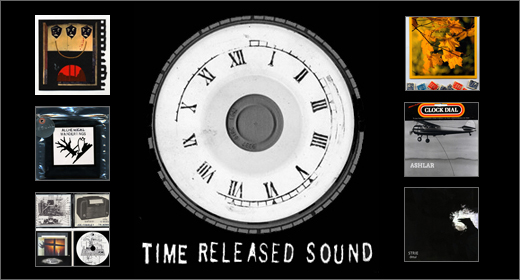
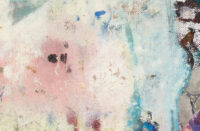
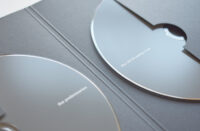


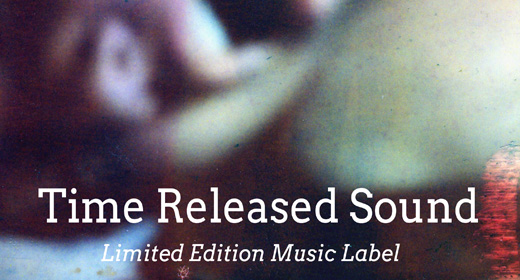
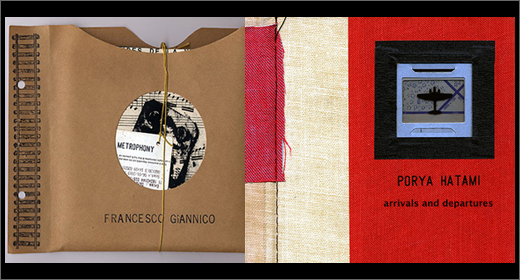
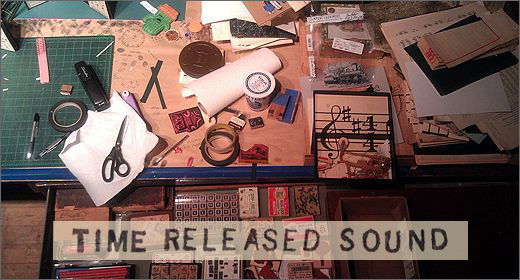
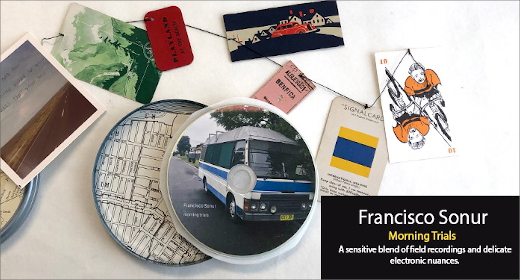
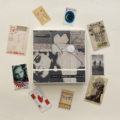


![Pole :: Tempus Remixes (Mute) — [concise]](https://igloomag.com/wp/wp-content/uploads/2025/04/pole-tempus-remixes_feat-75x75.jpg)






![Hasbeen :: Bunker Symphonies II (Clean Error) — [concise]](https://igloomag.com/wp/wp-content/uploads/2025/04/hasbeen-bunker-symphonies-ii_feat-75x75.jpg)
